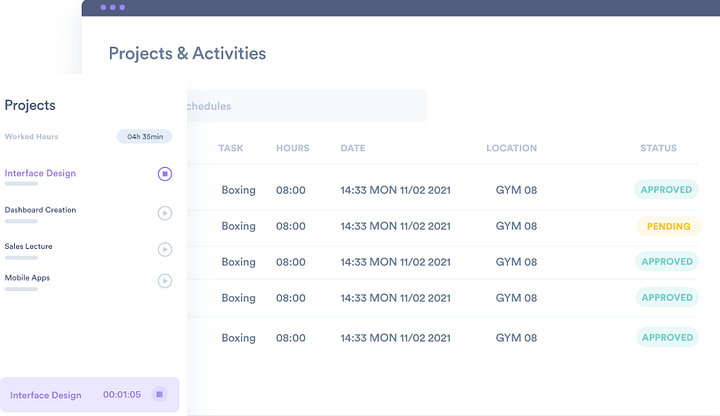Accurate project estimation is critical for the success of your business. From planning budgets and timelines to allocating resources, it’s the foundation for any successful project completion. Unfortunately, small businesses often make mistakes when estimating projects – resulting in missed deadlines, overspent budgets, and frustrated customers.
Don’t let that happen to you! Today, we’ll pinpoint 10 common errors made during project estimation and provide solutions on how to avoid them. Read on to ensure your projects are set up for success!
Throughout this article, we’ll discuss:
- What is Project Estimation
- Importance of Accurate Project Estimation for Business Success
- 10 Common Project Estimation Mistakes to Avoid
- Wrap-up: Navigate to Business Success and Avoid Project Estimation Mistakes

What is Project Estimation
Project estimation is creating a plan that outlines how much time, resources, and budget are needed to complete a project. It’s vital for businesses to accurately estimate the costs of their projects to deliver products on time and within budget. Inaccurate estimates can lead to problems with cash flow, missed deadlines, overworked employees, and unhappy customers.
Businesses routinely follow several steps when conducting project estimation, including:
- Defining the scope of the project
- Breaking down tasks into smaller components
- Assessing the complexity of each component
- Estimating resources and budget needed for completion
- Developing a timeline with key milestones.
Importance of Accurate Project Estimation for Business Success
Accurate project estimation is crucial for the success of any business. Here are the top three benefits of accurate project estimation:
- Improved business efficiency: Accurate estimates allow you to more accurately plan resources, timelines, and budgets for each project. This helps ensure that your team has the tools and financial means needed to complete tasks on time and within budget.
- Reduced risk: Good estimates help minimize risk by providing a better understanding of what’s needed to reach success before beginning any project. When risks are identified early on in the process, businesses can make changes or adjust their plans accordingly in order to avoid costly setbacks down the line.
- Increased customer satisfaction: Accurate estimates help ensure that customers receive their products on-time and within budget. This leads to more satisfied customers who will be likely to come back for future business – improving your bottom line in the process!
Management professionals and researchers have developed several project estimation techniques to assist businesses. Those include
- Function Point Analysis (FPA)
- Parametric Estimation
- Analogous Estimation
- Bottom Up Estimation and more.
Despite using advanced project estimation tools and techniques, businesses still make mistakes. Let’s take a look at ten common errors and the best ways to avoid them.
10 Common Project Estimation Mistakes to Avoid
Project estimation mistakes are common, but they don’t have to be. Here are 10 common mistakes businesses make when estimating a project and how to avoid them:
1. Failure to clearly define project requirements.
The most common mistake in project estimation is failing to clearly define requirements. Without a clear understanding of what the project will entail, it’s impossible to accurately estimate budget, timeline and resources required.
For example, you work with a client to create a website, but they don’t provide you with detailed specifications. Without knowing the scope of work, it’s impossible to provide an accurate estimate.
How to Avoid?
The solution is to set detailed project requirements before beginning the estimation process. This includes specifying deliverables and timelines, defining budget parameters, and outlining resource needs. Also, ensure to communicate frequently with the client to clarify any questions or concerns.
2. Management influence to achieve a desired result in estimates.
Another common mistake is when management pressures project estimators to provide an estimate that meets their desired outcome. This can cause estimators to make assumptions or overlook important factors, resulting in inaccurate estimates.
Here’s an example: A manager might pressure estimators to provide a low estimate in order to make the project look attractive to potential investors. However, this could lead to an underestimation of costs and resources required, resulting in missed deadlines and budget overruns.
How to Avoid?
To avoid this type of situation:
- Foster a culture of honest communication and mutual respect between management and project estimators.
- Make sure that all parties involved in the estimation process are aware of the consequences of inaccurate estimates.
- Finally, ensure to document all assumptions made and projections given during the estimation process for future reference.
3. Failure to consider the impact of external factors.
Project estimators often fail to consider the impact of external factors, such as changes in market conditions or regulations. This can lead to inaccurate estimates and potential project delays if not accounted for.
For instance, let’s say you’re creating a website for a client in the travel industry. If you don’t consider any changes in government regulations related to travel during your estimation process, it could lead to unexpected costs and timeline overruns once work begins.
How to Avoid?
The solution is to conduct thorough research before beginning the estimation process and factor in any potential external influences that may affect the project outcome. Additionally, it’s essential to keep up-to-date with any industry changes and communicate them with stakeholders throughout the project life cycle.
Few of the common external factors are:
- Political or economic conditions
- Changes in laws and regulations
- Competition from other companies
- Technology advances
- Consumer trends.
4. Using incorrect historical data or inaccurate assumptions in estimates.
When estimating a project, businesses often rely on historical data or assumptions to make their estimates. Unfortunately, this can lead to inaccurate estimates. For example, if you assume that the same resources are needed and a budget is required as in the previous project–it may not be accurate for the current project.
How to Avoid?
The solution is to use up-to-date information and reliable sources when estimating projects. Do your research and talk with stakeholders to get an accurate picture of what’s needed for each project before making any projections. Also, be sure to document all assumptions made during the estimation process so that they can be verified later on if needed

5. Not allowing enough time for planning and preparation.
Another key mistake is not allowing enough time for planning and preparation. Estimating a project requires thorough research, analysis, and communication – all of which take time. Without proper preparation, estimators can overlook important factors or make inaccurate assumptions that lead to failed projects.
How to Avoid?
Set aside adequate time for planning and preparation before beginning the estimation process. This includes researching the project’s scope of work, gathering requirements from stakeholders and customers, analyzing past data or trends related to the project, etc. Ensuring you have all the correct information will help you create accurate estimates in less time!
6. Lack of collaboration and communication between departments and stakeholders.
Failing to coordinate between departments and stakeholders when estimating a project leads to errors. If key players aren’t involved in the estimation process, it can lead to inaccurate estimates due to a lack of information or conflicting perspectives.
How to Avoid?
To ensure accurate estimates, bring all relevant parties together during the estimation process so they can provide input and help identify potential issues. Additionally, use project management tools such as Gantt charts and task tracking systems to facilitate collaboration among team members.
7. Not accounting for contingencies.
Contingency planning is an integral part of the estimation process, as it allows you to plan and anticipate potential risks or issues that may arise during the project. Without proper contingency planning, businesses can be blindsided by unexpected costs or delays in completion.
How to Avoid?
When estimating a project, include buffer time and budget for unexpected developments. This will help your business stay on track should any problems arise during the project. Additionally, create a risk management plan that outlines possible scenarios and how you’ll address them if they occur.
8. Underestimating costs associated.
Underestimated costs include labor, materials, equipment rentals, and other miscellaneous expenses. Underestimating prices can lead to budget overruns or cuts that could negatively impact the final product.
How to Avoid?
Be sure to account for all potential costs when estimating a project. Also, ensure you are using current pricing information for materials and resources required. Finally, leave room in your budget for contingencies such as unexpected delays or additional tasks that may arise during the project’s completion.
9. Overlooking time required for management and administrative tasks.
Let’s say you estimate that a project will take one week to complete but don’t account for the time needed to manage and approve tasks. When this happens, it results in delays as management takes additional time to review progress made or evaluate estimates given.
How to Avoid?
When estimating projects, be sure to include any management or administrative time required in the overall timeline of your project. Moreover, ensure that all stakeholders are aware of the estimated timeline and their responsibilities to ensure no delays in the project. Using a time tracking tool like Day.io that can separately track billable and nonbillable hours can help.

10. Not using project estimation tools.
Finally, one of the biggest mistakes businesses make is not using project estimation tools. These powerful software solutions provide detailed estimates for complex projects and help track progress. Not only do they reduce human error, but also allow you to analyze data quickly and accurately.
Investing in reliable software project estimation tools can save your business both time and money in the long run.

Wrap-up: Navigate to Business Success and Avoid Project Estimation Mistakes
Accurate project estimation is essential for business success – but it’s not always easy. To help you avoid costly mistakes, we’ve outlined ten common errors to watch out for. From failing to define project scope to relying on inaccurate estimation techniques, these missteps can majorly impact your bottom line.
Fortunately, there are plenty of ways to get your project estimation right. Start by gaining an in-depth understanding of the fundamentals and implementing best practices such as defining scope, accounting for risks, and considering resource availability. Then, take advantage of tools like Day.io – a highly capable project and time tracking tool that also packs some solid project cost estimation features for small businesses.


